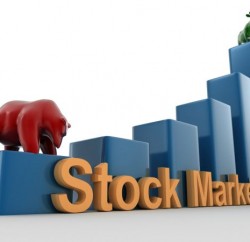On Thursday, Shares of Boston Scientific Corporation (NYSE:BSX), gained 1.56% to $18.27.
Boston Scientific Corporation, declared the appointment of Professor John Mark Morgan as senior medical director, Rhythm Administration, effective from September 1st, 2015.
Prof. Morgan, an internationally recognized expert clinician in the field of cardiac rhythm administration, will assist shape and influence the advancement of medical therapies across all areas of the Cardiac Rhythm Administration division, with a particular focus on Europe.
Prof. Morgan presently serves as consultant cardiologist, specialist in Cardiac Rhythm Administration at University Hospital Southampton NHS Trust, and honorary professor of Cardiac Rhythm Administration at the University of Southampton, United Kingdom. He will leave his NHS appointment from September 1st but will continue his academic affiliations.
Boston Scientific Corporation develops, manufactures, and markets medical devices for use in various interventional medical specialties worldwide. The company operates in three segments: Cardiovascular, Rhythm Administration, and MedSurg.
Shares of JPMorgan Chase & Co. (NYSE:JPM), declined -0.41% to $66.20, during its last trading session.
A professional development training course on new export and foreign direct investment (FDI) programs will be offered in Chicago, Illinois, July 23-24, 2015. The training comes as part of a new initiative by the International Economic Development Council (IEDC), with assistance from JPMorgan Chase. The training course with the IEDC expands upon the work of the Global Cities Initiative, a joint project of Brookings and JPMorgan Chase, which aims to equip business, civic and government leaders with the information, policy ideas and connections they need to assist their metropolitan areas succeed in the global economy.
The advanced training will teach the core components needed to bring the world economy to a community’s front door. FDI and exporting are now essential components of a local economic development strategy. Attendees will learn how to attract foreign investors, counting how to identify targeted sectors and engage with new businesses. They will also explore how to facilitate exports in their community, with an emphasis on how existing federal and state programs can assist. The training will cover all aspects of doing business with foreign entities, from cultural differences to tax and financing issues.
JPMorgan Chase & Co. provides various financial services worldwide. The company operates through four segments: Consumer & Community Banking, Corporate & Investment Bank, Commercial Banking, and Asset Administration.
At the end of Thursday’s trade, Shares of Union Pacific Corporation (NYSE:UNP), lost -1.23% to $101.36.
Union Pacific Corporation, plans to invest $72 million in 2015 to improve Louisiana’s transportation infrastructure. The company’s multi-million dollar private investment will enhance employee, community and customer safety and enhance rail operating efficiency. Freight railroads like Union Pacific operate on track built and maintained without taxpayer funds. Union Pacific’s private investments sustain jobs and ensure the company meets growing demand for products used in the resurgent American economy.
Union Pacific’s planned investment covers a range of initiatives: $67 million to maintain railroad track, $1 million to enhance signal systems and $2 million to maintain or replace bridges in the state. Key projects planned this year comprise:
- $11 million investment in the rail line between Columbia and Pollock to replace 22 miles of rail and repair the surfaces at 21 road crossings.
- $8 million investment in the rail line between Fordoche and Morrow to replace 22 miles of rail and repair the surfaces at 12 road crossings.
Union Pacific Corporation, through its partner, Union Pacific Railroad Company, operates railroads in the United States. The company offers freight transportation services for agricultural products, counting grains, commodities produced from grains, and food and beverage products; automotive products, such as finished vehicles and automotive parts; and chemicals comprising of industrial chemicals, plastics, crude oil, liquid petroleum gases, fertilizers, soda ash, sodium products, and phosphorus rock and sulfur products.
Finally, Bristol-Myers Squibb Company (NYSE:BMY), ended its last trade with 1.10% gain, and closed at $69.15.
Bristol-Myers Squibb Company, will host a teleconference on Monday, June 1, 2015, at 7 p.m. EDT (6 p.m. CDT) to review data presented at the Annual Meeting of the American Society of Clinical Oncology (ASCO) in Chicago. Company executives will provide an overview of data presented at the meeting, with a focus on the company’s immuno-oncology portfolio, and address inquiries from investors and analysts.
Bristol-Myers Squibb Company discovers, develops, licenses, manufactures, markets, distributes, and sells biopharmaceutical products worldwide. It provides chemically-synthesized drugs or small molecules, and biologics in various therapeutic areas, counting virology comprising human immunodeficiency virus infection (HIV); oncology; neuroscience; immunoscience; and cardiovascular.
DISCLAIMER:
This article is published by www.wsnewspublishers.com. The Content included in this article is just for informational purposes only. All information used in this article is believed to be from reliable sources, but we make no representations or warranties of any kind, express or implied, about the completeness, accuracy, or reliability with respect to this article.
All visitors are advised to conduct their own independent research into individual stocks before making a purchase decision.
Information contained in this article contains forward-looking information within the meaning of Section 27A of the Securities Act of 1933 and Section 21E of the Securities Exchange Act of 1934, counting statements regarding the predictable continual growth of the market for the corporation’s products, the corporation’s ability to fund its capital requirement in the near term and in the long term; pricing pressures; etc.
Any statements that express or involve discussions with respect to predictions, expectations, beliefs, plans, projections, objectives, aims, assumptions, or future events or performance may be forward looking statements. Forward-looking statements are based on expectations, estimates, and projections at the time the statements are made that involve a number of risks and uncertainties which could cause actual results or events to differ materially from those presently anticipated. Forward looking statements may be identified through the use of such words as expects, will, anticipates, estimates, believes, or by statements indicating certain actions may, could, should/might occur.



